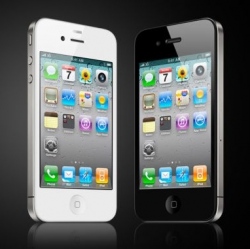
It’s really a rather curious thing that the most popular devices in the world right now are, arguably, the best designed. Not to cheerlead for Apple, but we can all agree that whatever their faults, the original iPhone and the iPhone 4 are impressive examples of one-upping the competition in both material and industrial design.
In a way, it’s a bit like if the most popular car in the world were a Lamborghini instead of a mass-market compact. Except, of course, that part of the draw of a Lamborghini is exclusivity. If everyone owned Lamborghinis, they would likely be seen as pedestrian. That’s the paradox of the iPhone’s success — high design coexisting with ubiquity.
But the lustre of the iPhone is diminishing, partly because of a lack of imagination on Apple’s part, and partly because of three other factors.
First, there is a massive and continuing migration onto smartphone platforms in places where the iPhone has little cachet. That the iPhone could be considered a Western affectation is potentially a huge block to uptake in expanding markets like India and China. This is a complicated, unpredictable, global economic thing and not at all what I wanted to talk about, but there it is.
Second, mass manufacturers of poorly-made widgets, which have sold hundreds of millions for decades, are slowly becoming aware of the necessities and realities of a “premium” product, which is another name for something that isn’t garbage. So you have the likes of the latest Nokia and HTC devices. The movement away from disposable electronics is a slow and strange process, and is also not exactly what I want to discuss, though it’s part of it.
Third is the incredible improvement in decentralized product creation. It’s things like the Ouya on Kickstarter, the Shine on Indiegogo, and a hundred other devices and pieces of kit. These are made possible by the wide availability of design and prototyping equipment, and the ability to insert themselves into a process that was once uncomeatable (I am bringing this word back).
What the teams do is abstract only the portion of the productization process that is necessary for their purposes. Previously something like a mobile phone could only be created by a large, vertically-integrated company like Samsung. And really, that’s still true. A Samsung-like entity is necessary for the creation of a mobile phone. So is a Hon Hai, and an aluminum mill, and a shipping company, and an oil refiner… the list, like the minimum viable society in Plato’s Republic, quickly grows when you consider everything that’s involved in making and delivering a product.
